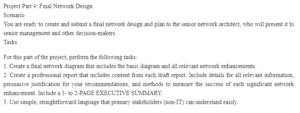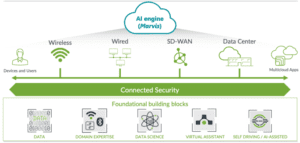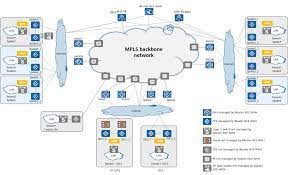Final Network Design and Executive Summary
Executive Summary
As organizations continue to expand in contemporary corporate society, so does the rise in the use of information systems and the Internet of Things. They are widely utilized in coordinating operations, remote working, and enhancing operational efficiency. Having a reliable network is one of the most valuable aspects that any organization may have. Accordingly, the main concerns that must be addressed are enhancing the network’s scalability, flexibility, reliability, efficiency, security, and sustainability. By adopting the proposed changes, the organization will benefit highly. For instance, enhancing accessibility will help support the office and remote workers. The challenges the company faced during the coronavirus pandemic of straining to shift to the remote working domain will be effectively managed. Subsequently, the organization will be able to run its operations smoothly without any network interruptions.
Also, the network is designed in such a manner to expand the network access to individuals and devices. The wireless connection is a vital aspect of the new extension of the access layer. Therefore, wireless connectivity is advantageous due to enhanced flexibility, reduced costs, and the ability to thrive and be sustainable to evolving network and business requirements.
In addition, the main concern addressed in our proposed network design is enhancing the security of the network and our information and data systems. In an increasingly insecure digital and cyber world, embracing the above-proposed network design will effectively improve the safety and continuity of business operations by safeguarding the organization from cyber-security threats.
Introduction
Organizations must ensure adequate and reliable network designs as they keep growing and adapting to contemporary corporate, organizational, and market trends. Primarily, the main aspects that need to be enhanced include reliability, availability, and flexibility to leverage networks to improve operational efficiency and continuity of operations. The main recommendations posed are enhancing the WAN security, enhancing remote access, and improving the network’s security. Consequently, by adopting the proposed network topography and security enhancements, the organization will benefit significantly from the ease of operations, improved safety, and coordination of operations.
Recommendations for the Network Design and Their Respective Rationale
Organizations must have a scalable, resilient, dependable, secure, flexible, and valuable network design. Besides, modern networks are stressed by the monumental shift to remote working due to economic reasons and the COVID-19 pandemic. The main recommendations entail the security and automation of the WAN, automated detection technology, multi-cloud access control, enhancing operational excellence, and user experience. Thus, the primary transformation expected is the switch to the modernization of the WAN for improved efficiency, reliability, and use by office and remote workers.
Our organization is switching to WAN modernization to enhance the network use and experience. Essentially, WAN modernization offers over fifty percent reduced time to execute specific policy and configuration changes. Besides, providing a single controller-based WAN offers a more straightforward approach and security. Also, it allows installation with a higher speed, allows remote automation, and, as a result, simplifies deployment. In addition, WAN modernization also enables secured connections to the internet. Also, since WAN modernization supports secure DIA, it allows users to access the internet locally and removes less sensitive traffic without jeopardizing network security.
As a result, this improves internet speed, lowers costs, and scalable infrastructure for internet access in all locations. Additionally, under the proposed network design, cloud security configuration may be automated to ease the management of internet connectivity in all areas. Also, the more integrated security solutions may be managed from a centralized location. Moreover, by integrating the SD-WAN technology, the organization will benefit from improved application performance (Wang, Gunasekaran & Ngai, 2018).
The modernization of the WAN network also provides flexible security policies that make it possible to identify and allocate traffic to the direct internet for quicker connections. Besides, it also ensures application performance uptime to minimize the impact of potential downtime on operational productivity and support optimal performance for the organization. An organization like ours operating on legacy WAN will benefit immensely from WAN modernization and, in turn, reduce excessive downtime, poor user experience, and high bandwidth costs.
As remote working becomes the norm, it is crucial to scale operations and enhance performance, support workers operating from home WAN modernization and SD-WAN streamline innovation, enhance network security, improve user experience, and generate measurable ROI.
Virtual Private Network and Remote Access
On the one hand, a virtual private network is a system that uses tunneling to ensure a secure connection to an organization’s internal network, even if the user is on a public network. The system works by encrypting data before sending it over the network connection. The data is then decrypted once it reaches the destination device. Encryption keeps eavesdroppers and other attackers from accessing the data sent over the network. Accordingly, if the data are intercepted, encryption will ensure the information is not in an understandable or usable format. Virtual private networks also hide internet protocol addresses to maintain device privacy on a public network (Sabin, 2021).
On the other hand, remote access is the ability to use a computer or other device connected to the network without physically being in the same building. Subsequently, this allows members of an organization to work from home and run organization machinery and networked devices without physically being in the same building. Remote access can be combined with the virtual private network to maintain cyber security. Remote access can also be used by human resources as well as management to monitor the performance of their employees at work. Remote access has different permission levels, with some allowing the user only restricted access and others allowing complete control depending on the security and permission levels granted to the user. Permission levels can also be used as a layer of security; where hackers or other malicious users gain access to low-level authentication details, they can not cause any real damage to the system (Sabin, 2021).
Conclusion
Across the corporate world, most organizations invest highly in getting reliable network design. As business operations change and cyber threats evolve, businesses must adopt network design frameworks supporting new trends, such as remote working and enhanced network security. By adopting the proposed recommendations discussed above, the organization will be positioning itself primarily to adapt to these changing business, customer, and market needs. A reliable network should be secure, scalable, flexible, user-friendly, and efficient in promoting normal operations in an organization.
References
Poddar, S., & Pal, D. (2021). Computer Networking: A Review. International Research Journal of Modernization in Engineering Technology and Science, 3(7).
Sabin, J. (2021). The future of security in a remote-work environment. Network Security, 2021(10), 15-17.
Wang, G., Gunasekaran, A., & Ngai, E. W. (2018). Distribution network design with big data: Model and analysis. Annals of Operations Research, 270(1), 539-551.
Yang, Z., Cui, Y., Li, B., Liu, Y., & Xu, Y. (2019). Software-defined wide area networvastD-WAN): Architecture, advances, and opportunities. In 2019, the 28th International Conference on Computer Communication and Networks (ICCCN) (pp. 1-9). IEEE.
ORDER A PLAGIARISM-FREE PAPER HERE
We’ll write everything from scratch
Question
Project Part 4: Final Network Design
Scenario
You are ready to create and submit a final network design and plan to the senior network architect, who will present it to senior management and other decision-makers.

Final Network Design and Executive Summary
Tasks
For this part of the project, perform the following functions:
1. Create a final network diagram that includes the basic chart and all relevant network enhancements.
2. Create a professional report that includes content from each draft report. Include details for all relevant information, persuasive justification for your recommendations, and methods to measure the success of each significant network enhancement. Include a 1- to 2-PAGE EXECUTIVE SUMMARY.
3. Use simple, straightforward language that primary stakeholders (non-IT) can understand easily.



